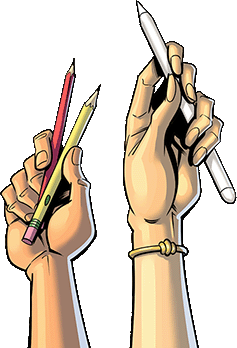Tips For Bulk Poster Printing On a Budget
March 2, 2021
Posters are a fantastic way to make people aware of your business. They are an economical solution for your marketing campaigns and a creative way to catch consumers’ eyes.
Cheap poster printing is a visible way to get the word out there, and production is easy and inexpensive. If you want to explore the exciting marketing options that bulk poster printing can provide, you need to know some tricks to keep your overhead low and expenses at a minimum.
There are many publishing tools you can use as part of your professional marketing strategies. Today’s printing services enable you to splash out using business cards, table tents, rack cards, or door hangers. Printing posters can give your business a much-needed boost, and it doesn’t have to be too expensive.
Here are some tips so that you can make the most of your printing opportunities.
Choose the Right Size Paper
If you want to save money on your bulk printing projects, pick a paper size that can fit onto a standard press. Posters are already large documents, so don’t choose too large a size. The three most common poster sizes are 18” x 24”, 24” x 36”, and 27” x 40.”
There are other considerations when thinking about what size your promotional posters will be, such as are you planning on mailing them? A mailing service often charges more for large posters. If you can make sure that your poster size will not cost too much to send, you can easily transport your marketing efforts to different locales.
Can you tweak the poster’s design to make it stand out without resorting to a larger poster size? If you can find poster designs that are vivid enough on their own, and you don’t need to substitute an eye-catching design template for astonishing size.
If you’re printing a batch for a promotional event (so these posters will expire at a certain point), choose an affordable stock and spend a little extra on color. Ordering custom sizes, like a print run of extra-extra-large posters, make it more expensive for the printer to produce.
Pick House Stock
Many printing services have a standard stock paper they keep on hand for in-house printing projects and basic print jobs. If you get a paper stock that is specially ordered, it will cost more.
Common stocks that most printing services have readily accessible are 100# gloss text and 80# gloss text; these paper weights are not too heavy and not too light. Too light and you sacrifice durability, and your posters will easily rip; too heavy, and you’re wasting money.
Only Use Standard CMYK
This 4-color process is the standard printing practice, so using this process and sticking to these colors only ensures you keep your overhead low when creating your posters.
CMYK stands for cyan, magenta, yellow, and key, which is black, or all the colors mixed. Avoid metallic accents, PMS colors, or foil stamps to limit unnecessary costs.
Be Precise About Numbers
With print-on-demand printing options producing high-quality results on excellent poster paper, you can be as precise as possible when you’re thinking about how many posters you need to print.
You should always print around 5-10% more posters than you need as a buffer so that if some are damaged in transport, you can still make up the difference.
Avoid Stock Photos
Instead of using stock images or stock photography, keep it simple with vector art and straightforward typography. Stock photos are often overused and can appear inauthentic.
It’s often more original to use your design instead of going with something that might appear on countless other marketing tools from other companies. You often need an expensive licensing fee to use stock photography on commercial marketing products.
Save on Simple Fonts
Many professional fonts cost money to use, but tons of free options look just as good. The trick is not to use too many fonts. Stick to one or two; you can differentiate with font size if you’d like.
You also don’t want to clutter up your design with a lot of typography. A poster should provide the basic information you need to know, and you should be able to scan it at a glance.
Consider Your Black Hues
There’s a lot more nuance to the color black than you might expect. The four-color printing process mixes the four process colors in differing amounts to create the desired hue. If you don’t get the right combo the first time, you may have to reprint because your posters looked too washed-out to use.
Most CMYK printing processes use 30%, 10%, 10%, and 10% of the process colors to create black, which a professional printing service like Comix Well Spring will know immediately. Double-check that the black combination you’ll be using on your posters, especially if there’s a lot of it in the design, is the right combo.
Only Use Inside
You can skip the pricey extras like high gloss if you will only use your posters inside. Outdoor use will enhance the wear and tear, and even if you do get signs in high gloss, the extra coating doesn’t guarantee that the poster will hold up in harsh outdoor elements.

The Last Word
Picking the right marketing tools for your company is challenging, as there are so many options these days. The traditional poster is a fantastic tool to get potential customers’ attention; they’re transportable, effective, and economical.
Contact Comix Well Spring for an estimate on your next bulk printing job. We can help you choose the most affordable and best solutions for your marketing questions and avoid costly details like high gloss or metallic paint. Cost-effective options like 80# high gloss stock paper and the right kind of black will make your next bulk printing job a breeze.


